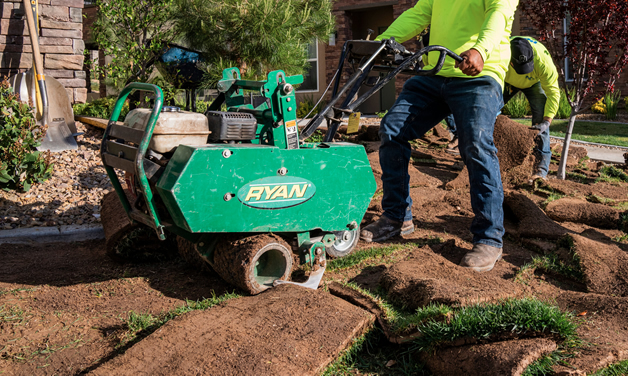
Nevada’s Law to Remove Non-Functional Turf for Water Conservation
Nevada has implemented a new law that requires property owners to remove non-functional turf to conserve water. With the increasing demand for water resources and the impact of climate change, Nevada is taking steps to conserve water and reduce the amount of water consumed in landscapes.
The new law comes as a result of former Governor Steve Sisolak’s executive order to address the state’s drought crisis. Nevada is experiencing one of the driest years on record, with Lake Mead, the state’s largest reservoir, reaching historic lows. Removing non-functional turf will help reduce water consumption and preserve this vital resource for future generations.
What is non-functional turf?
Non-functional turf refers to grass areas that are not used for recreation, play, or visual aesthetics. These areas may include grass medians, turf along sidewalks or highways, and grass on commercial or industrial properties. These areas typically require irrigation, fertilization, and maintenance, which can be costly and wasteful.
Why remove non-functional turf?
Removing non-functional turf can help conserve water and reduce the amount of water consumed in landscapes. In Nevada, up to 70% of residential water use goes towards outdoor irrigation. By removing non-functional turf, property owners can significantly reduce their water consumption and help alleviate the state’s water crisis.
Benefits of removing non-functional turf:
- Water conservation: Removing non-functional turf can help conserve water, reducing the amount of water used in landscapes and alleviating the state’s water crisis.
- Cost savings: Maintaining non-functional turf can be expensive, requiring irrigation, fertilization, and maintenance. By removing non-functional turf, property owners can save money on water bills and maintenance costs.
- Improved aesthetics: Removing non-functional turf can improve the visual appeal of landscapes by replacing grass with drought-tolerant plants or hardscaping.
- Environmental benefits: Maintaining non-functional turf can have negative environmental impacts, such as using fertilizers that can contribute to water pollution. Removing non-functional turf can reduce these impacts and promote a healthier ecosystem.
How to comply with the law:
Property owners must remove non-functional turf by December 31, 2026, to comply with the law. However, property owners are encouraged to remove non-functional turf as soon as possible to conserve water and reduce costs.
Here are some steps property owners can take to comply with the law:
- Identify non-functional turf areas on your property.
- Determine the best way to remove non-functional turf, whether it be through hardscaping, planting drought-tolerant plants, or another method.
- Apply for any necessary permits or approvals from local government agencies.
- Hire a licensed contractor or landscaper to remove non-functional turf and complete the new landscape design.
- Maintain the new landscape design to ensure it remains in compliance with the law and continues to conserve water.
Enforcement:
Local government agencies will be responsible for enforcing the law and ensuring that property owners comply with the new regulations. Property owners who fail to comply with the law may face fines and penalties.
Nevada’s new law to remove non-functional turf is an important step towards conserving water and promoting a sustainable future. By removing non-functional turf, property owners can save money, improve the visual appeal of their landscapes, and help alleviate the state’s water crisis. Property owners are encouraged to take action and comply with the law to ensure a healthier and more sustainable future for Nevada.
